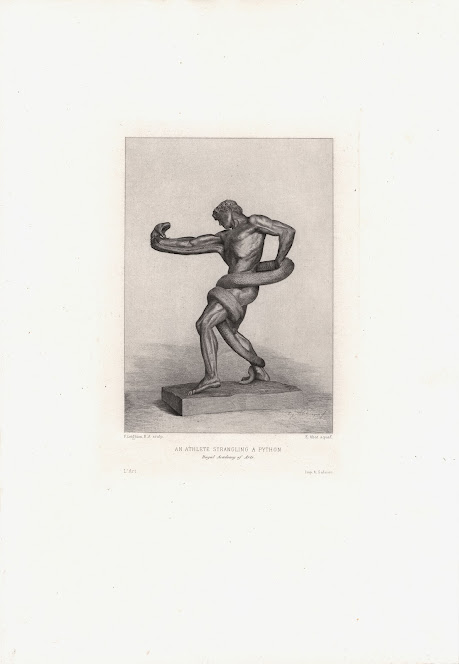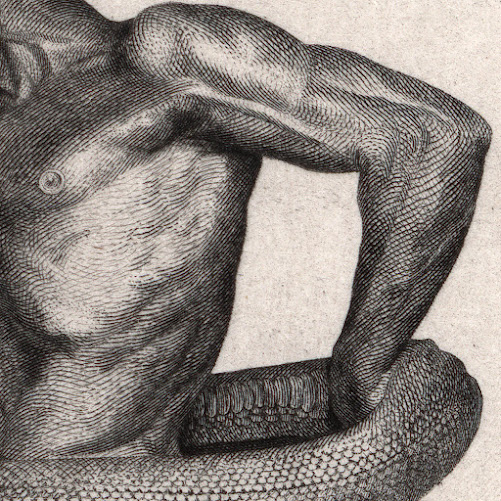Alfred Louis Brunet-Debaines (1845–1939)
“St. Denis”, 1885,
mezzotint after Joseph Mallord William Turner’s (1775–1851) watercolour (c.1833),
in the collection of the Tate Gallery, London, showing the suburb of Saint-Denis
in Paris with the Basilica of Saint-Denis seen across
the River Seine on a moonlit night, published in London by Seeley
& Co. (fl.1839–early 1900s) in 1885.
Regarding the painting, the Tate Gallery offers the
following insights: “Although St Denis is ostensibly the subject of this image,
the ancient cathedral is relegated to the distance, and even the activities of
the people in the foreground are of secondary interest to the enveloping
coolness of the moonlight. In much the same way that many of Turner's later
paintings present forms outlined by the strong sunlight at the centre of his
image, he is here exploiting the subdued silhouettes created by a full moon” (https://www.tate.org.uk/art/artworks/turner-st-denis-d24686).
Note that Samuel Fisher (1806-1851) also executed
an etching with engraving after Turner’s watercolour (see https://www.britishmuseum.org/collection/object/P_1849-0512-715),
published in “Wanderings by the Seine” in 1835. Comparison of Fisher and Brunet-Debaines’
prints with Turner’s watercolour reveals very different readings of the scene. Arguably
Fisher’s etching (with engraving) is sharper in focus giving the scene the clarity
of an icy night under the full moon, whereas Brunet-Debaines’ mezzotint presents
the same scene with a softness of mist and a hint of ethereal mystery—of
course, these ways of reading the prints is a personal response only.
Mezzotint printed in a warm black ink on wove paper (with
watermark) with full margins.
Size: (sheet) 20.5 x 32cm; (plate) 15.8 x 20.8cm;
(image borderline) 13 x 18cm.
Condition: a strong impression with
generously wide margins. Beyond a few spots of retouching, the sheet is otherwise in an excellent condition with no tears, holes, folds,
stains or signs of handling.
I am selling this richly glowing mezzotint showing a
full moon illuminating the distant Basilica of Saint-Denis in Paris after
Turner’s watercolour of the same scene, for the total cost of AU$187 (currently
US$121.52/ EUR116.04/ GBP96.62 at the time of this listing) including Express
Mail (EMS) postage and handling to anywhere in the world, but not (of course)
any import duties/taxes imposed by some countries. Note that payment is in
Australian dollars (AU$187) as this is my currency.
If you are interested in purchasing this very beautiful
mezzotint, please contact me (oz_jim@printsandprinciples.com) and I will send
you a PayPal invoice to make the payment easy.


























































